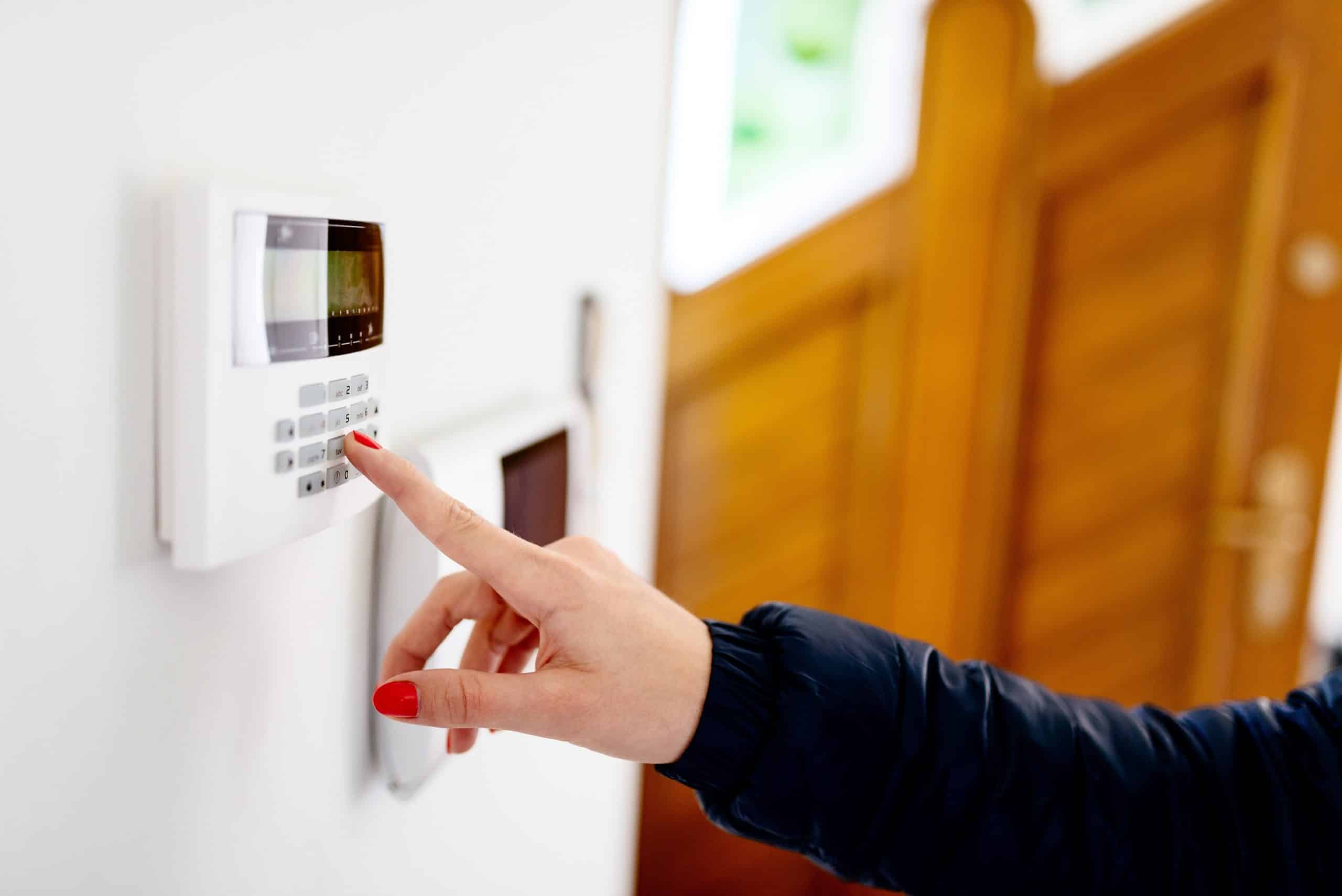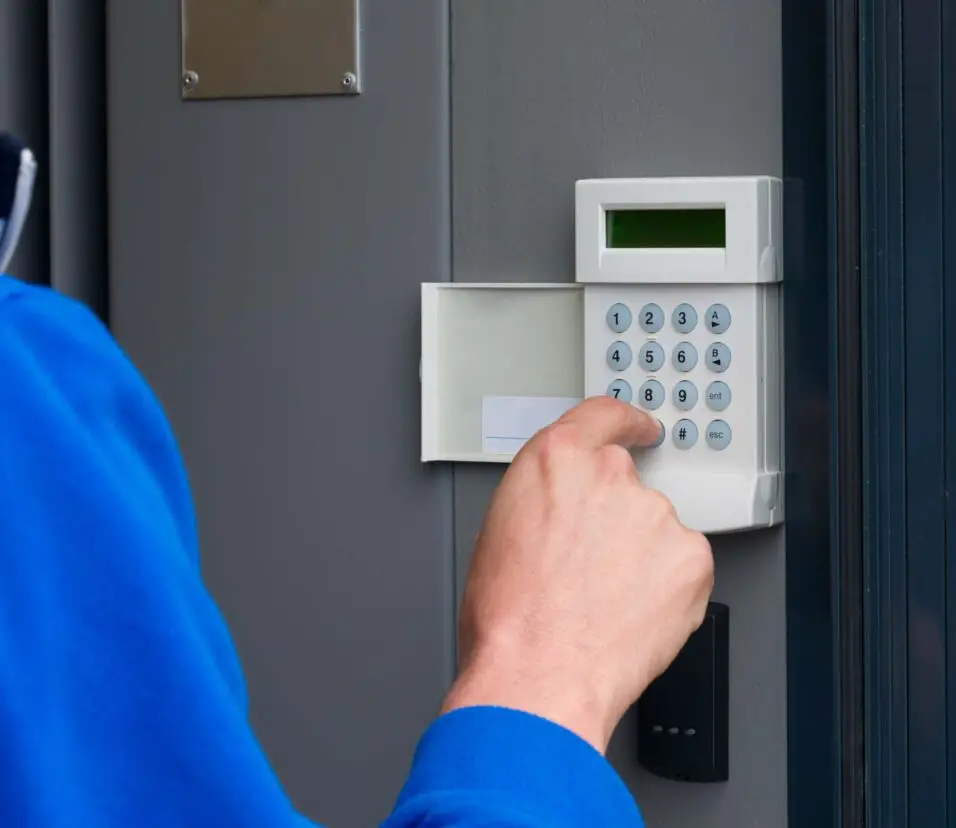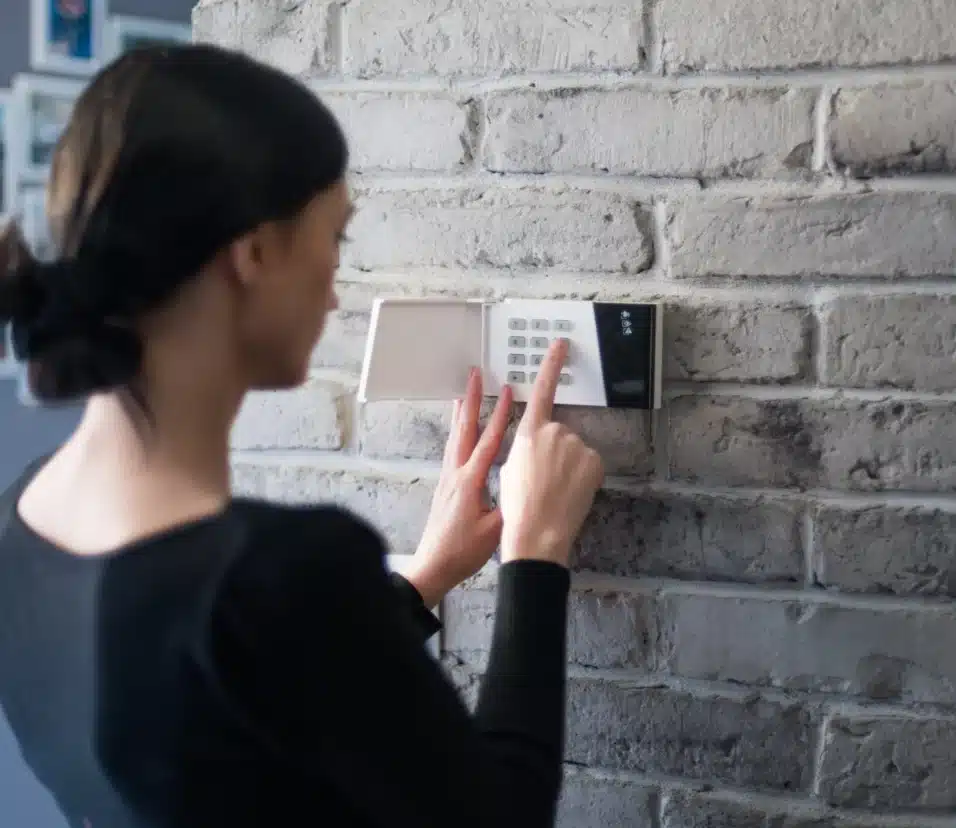How Does A Home Security System Work
Introduction
How Does A Home Security System Work: Home security systems have become an essential part of modern living, providing homeowners with peace of mind and protection against potential threats. With the advancements in technology, these systems have evolved to offer a wide range of features and capabilities. But have you ever wondered ,we will delve into the intricacies of home security systems and explore the various components that make them effective in safeguarding your home.
One of the key components of a home security system is the sensor. Sensors are strategically placed around the house and are designed to detect any unauthorized entry or movement. These sensors can be in the form of door/window sensors, motion sensors, or glass break sensors. When a sensor is triggered, it sends a signal to the control panel, which then activates the alarm system.
Another important aspect of a home security system is the surveillance cameras. These cameras are strategically placed around the perimeter of the house and can also be installed indoors to monitor specific areas. The cameras capture high-quality video footage, which can be accessed remotely through a smartphone or computer. This allows homeowners to keep an eye on their property even when they are away.
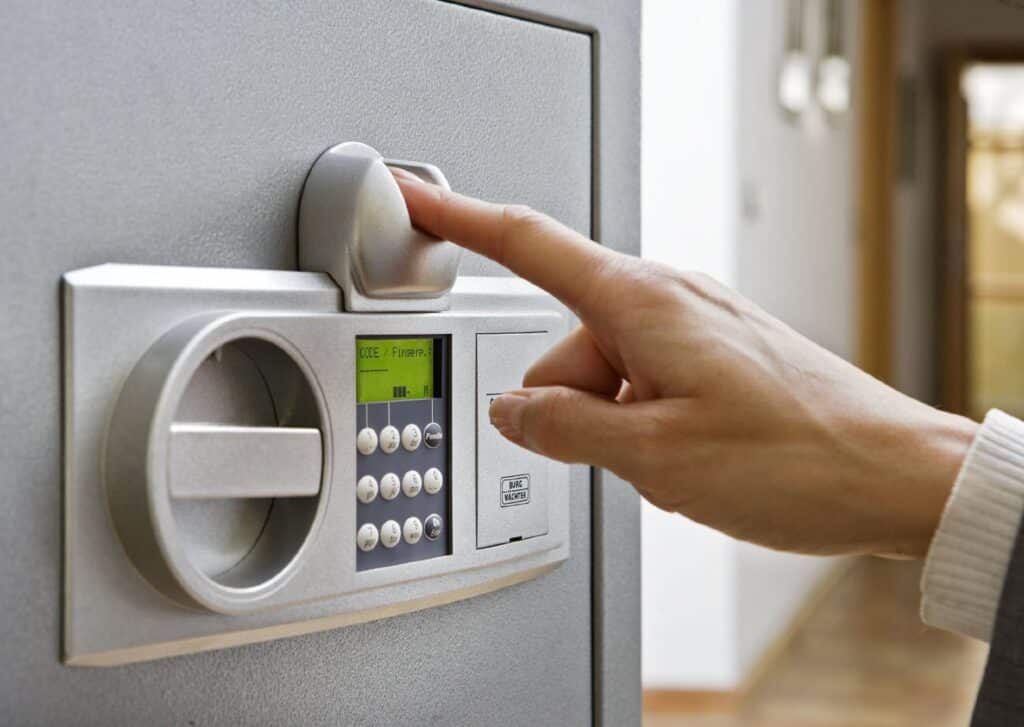
How are home security systems powered?
Your home alarm system is a “low vol”, or low voltage system. These systems are not wired directly in to your house power, but are powered from your wall electricity by a large transformer. This is basically an AC power adapter and a backup battery found in a panel box installed in your home.
There are several ways in which home security systems can be powered. One common method is through a direct connection to the home’s electrical grid. In this setup, the security system is wired directly into the electrical system of the house, drawing power from the main electrical panel. This ensures a constant supply of electricity and eliminates the need for batteries or alternative power sources.
However, many home security systems also incorporate battery backup as a secondary power source. This is particularly important in areas prone to power outages or for homeowners who want to ensure their security system remains operational even during electrical failures. The battery backup kicks in automatically when the main power supply is interrupted, allowing the system to continue functioning without interruption.
Direct electrical connections and battery backup, some home security systems also utilize solar power. Solar-powered security systems harness energy from the sun through solar panels installed on the exterior of the house. These panels convert sunlight into electricity, which is then used to power the security system.
How does a wired home security system work?
A hardwired security system has a network of wires running through the premises. The wiring network helps transmit signals and information to the central control panel. The transmitted information is viewed via a monitor or screen.
A wired home security system is a type of security system that uses physical wires to connect the various components of the system. These components typically include sensors, control panels, and alarm systems. The wired system is connected to a central monitoring station, which is responsible for monitoring the security of the home.
One of the key components of a wired home security system is the sensors. These sensors are strategically placed throughout the home to detect any unauthorized entry or movement. When a sensor is triggered, it sends a signal through the wires to the control panel, which then activates the alarm system.
The control panel is the central hub of the wired home security system. It receives signals from the sensors and processes them to determine if there is a security breach. If a breach is detected, the control panel activates the alarm system, which typically includes loud sirens and flashing lights to alert the occupants of the home and deter intruders.
The sensors and control panel, a wired home security system also includes a connection to a central monitoring station. This connection is made through a landline telephone or internet connection. The central monitoring station is staffed 24/7 and is responsible for monitoring the security of the home. When the alarm system is activated, the central monitoring station is immediately notified and can take appropriate action, such as contacting the homeowner or dispatching emergency services.
How does the first home security system work?
The first home security system was developed in the early 20th century and has since evolved significantly. It was designed to protect homes from burglaries and intrusions by alerting homeowners and authorities to any unauthorized entry.
The first component of the home security system was the door and window sensors. These sensors were placed on all entry points of the home, including doors and windows. They were designed to detect any movement or opening of these entry points.
The second component of the system was the motion detectors. These detectors were placed in key areas of the home, such as hallways and living rooms. They were designed to detect any movement within their range. If a motion detector detected any movement, it would also send a signal to the central control panel, which would then trigger an alarm.
The third component of the system was the central control panel. This panel was the brain of the home security system. It received signals from the door and window sensors and motion detectors and was responsible for triggering the alarms. It also had a keypad that allowed homeowners to arm and disarm the system.
The final component of the system was the alarm. When the central control panel received a signal from a sensor or detector, it would activate the alarm. The alarm could be a loud siren or a silent alarm that would notify the authorities. This would alert the homeowners and scare off any potential intruders.
What is home security system short note?
Home security systems are networks of integrated electronic devices working together with a central control panel to protect against burglars and other potential home intruders. A basic home security system includes: A control panel or base station with a separate keypad. Door and window sensors. Motion sensors.
A home security system is a network of devices and components that work together to protect a home from potential threats such as burglaries, fires, and other emergencies. It typically includes sensors, cameras, alarms, and a control panel that allows homeowners to monitor and control the system.
Home security systems have become increasingly popular in recent years as homeowners seek to enhance the safety and security of their properties. These systems provide peace of mind by offering round-the-clock monitoring and protection, even when homeowners are away.
The main purpose of a home security system is to detect and deter intruders. This can help to scare off potential burglars and notify authorities if necessary.
Home security systems can be customized to meet the specific needs and preferences of homeowners. They can include features such as video surveillance, remote access via smartphone apps, and home automation integration. Some systems even offer additional services such as medical alert monitoring and energy management.
What is the principle of security alarm system?
The burglar alarm circuit typically converts electrical energy into sound energy upon sensing movement. One of the key principles of a security alarm system is detection. The system is designed to detect any unauthorized entry or movement within a designated area. This can be achieved through various sensors such as motion detectors, door/window sensors, or glass break sensors. These sensors are strategically placed throughout the building or area to ensure comprehensive coverage.
Once a sensor detects any suspicious activity, it triggers the alarm system to initiate an alert. The purpose of the alert is to notify individuals in the vicinity and deter the intruder from proceeding further.
Another principle of a security alarm system is the integration of surveillance technology. Many modern alarm systems are equipped with video surveillance cameras that can capture and record footage of any suspicious activity.
This control panel is typically located near the main entrance and requires a passcode or key fob to access. A home security system typically consists of several main components that work together to provide comprehensive protection for your home.
These components include
1. Control Panel: This is the central hub of the security system, where you can arm or disarm the system and manage various settings.
2. Sensors: These are placed on doors and windows to detect any unauthorized entry. They can be magnetic sensors or motion sensors.
3. Cameras: Surveillance cameras are an essential part of a home security system. They provide visual monitoring and recording of activities in and around your home.
4. Alarms: Alarms are triggered when a sensor detects a breach. They can be loud sirens or silent alarms that notify a monitoring center.
5. Monitoring Service: Many home security systems offer professional monitoring services. In case of an alarm, the monitoring center is notified and can dispatch emergency services if needed.
Overall, these components work together to create a layered security system that helps protect your home from intruders and provides peace of mind.
How does a home security system detect intruders?
A home security system detects intruders through a combination of sensors and technology. The main components involved in detecting intruders include motion sensors, door and window sensors, and security cameras. These components work together to create a comprehensive security system that can effectively detect and deter intruders.
Motion sensors are one of the primary ways a home security system detects intruders. These sensors use infrared technology to detect changes in heat and movement within a designated area. When an intruder enters the range of the motion sensor, it triggers an alarm or sends a notification to the homeowner or security monitoring service.
Door and window sensors are another crucial component of a home security system. These sensors are typically placed on doors and windows and are designed to detect when they are opened or tampered with. When a door or window is opened while the security system is armed, it will trigger an alarm or send a notification to the homeowner or monitoring service.
Can a home security system be connected to other smart devices?
Yes, a home security system can be connected to other smart devices. With the advancement of technology, home security systems have become more integrated and interconnected with other smart devices in the home. This integration allows for a more comprehensive and convenient approach to home security.
Integrating a home security system with other smart devices can enhance the overall functionality and automation of the home. For example, a home security system can be connected to smart door locks, allowing homeowners to remotely lock or unlock their doors. It can also be connected to smart lighting systems, enabling homeowners to schedule lights to turn on and off at specific times or when motion is detected. These integrations not only improve convenience but also contribute to the overall security of the home.
What are the different types of home security systems available in the market?
There are several different types of home security systems available in the market today. The most common type is a traditional alarm system, which typically includes sensors on doors and windows, a control panel, and a loud siren. These systems are designed to detect when a door or window is opened while the system is armed, and will sound the alarm to alert the homeowner and potentially scare off intruders.
Another type of home security system is a wireless system, which uses radio frequency technology to communicate between the various components of the system. These systems are often easier to install and can be more flexible in terms of where sensors and cameras can be placed. They also typically have the ability to be controlled remotely through a smartphone app.
Some home security systems also include video surveillance, which allows homeowners to monitor their property through cameras that are connected to the system. These cameras can be placed both indoors and outdoors, and can provide a live feed or record footage for later viewing. This can be a valuable tool for identifying intruders or monitoring activity around the home.
How effective are home security systems in preventing burglaries?
Home security systems are highly effective in preventing burglaries and providing peace of mind to homeowners. These systems act as a deterrent to potential intruders, as the presence of visible security cameras, alarm systems, and signage indicating the presence of a security system can make a burglar think twice before attempting a break-in. In fact, studies have shown that homes without security systems are more likely to be targeted by burglars.
Home security systems provide immediate alerts in the event of a break-in, allowing homeowners to take quick action and notify the authorities. This can significantly reduce the response time of law enforcement and increase the chances of catching the intruder.
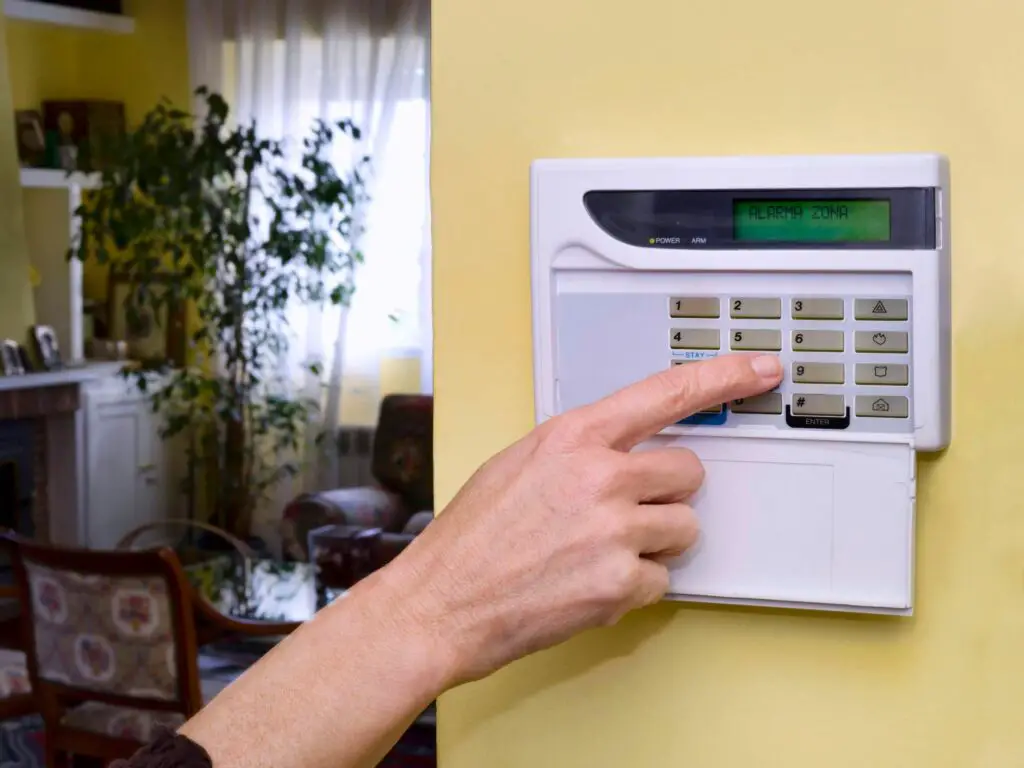
Conclusion
A home security system is a crucial component in ensuring the safety and security of your home and loved ones. It works by utilizing a combination of various devices and technologies to detect and deter potential intruders or emergencies. Understanding how a home security system works can help you make informed decisions when it comes to choosing the right system for your needs.
One of the key components of a home security system is the sensors. These sensors are strategically placed around your home and are designed to detect any unauthorized entry or movement. They can be in the form of door and window sensors, motion detectors, or glass break sensors. When these sensors are triggered, they send a signal to the control panel, which is the central hub of the security system.
The control panel is responsible for processing the signals received from the sensors and initiating the appropriate response. These devices provide an extra layer of protection by monitoring for potential hazards or emergencies. Security cameras can capture footage of any suspicious activity, while smoke and carbon monoxide detectors can alert you to potential fire or gas leaks.
A home security system works by utilizing a combination of sensors, a control panel, and other devices to detect and deter potential intruders or emergencies. It provides peace of mind knowing that your home and loved ones are protected, even when you’re not there. By understanding how a home security system works, you can make informed decisions when it comes to choosing the right system for your needs and ensure the safety and security of your home.



